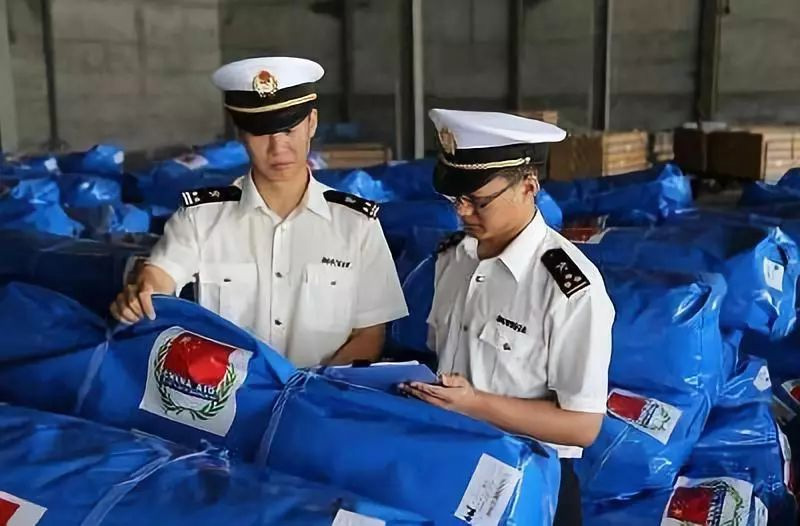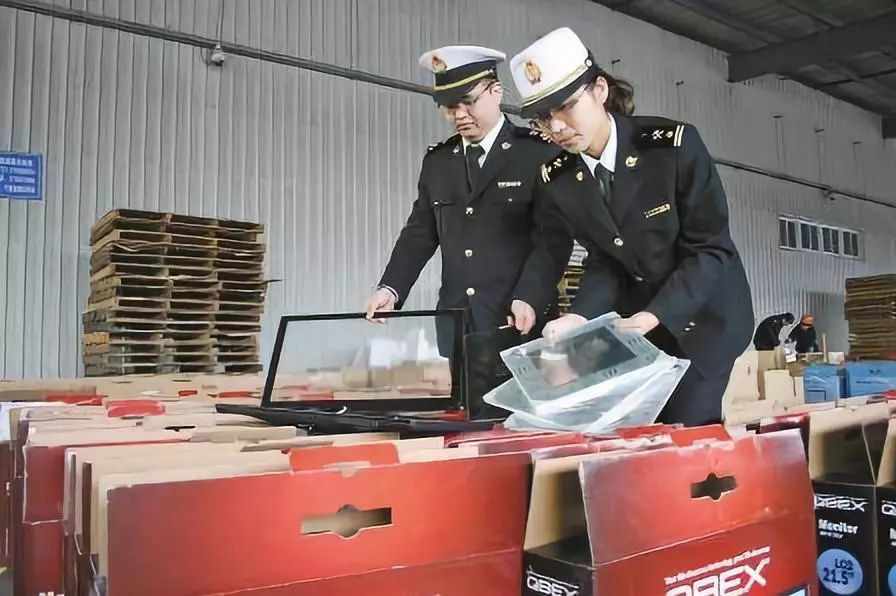
There will be some additional fees for customs inspection of cabinets, but these fees are not collected by the customs, but fees for hanging cabinets, cabinet dismantling fees and other fees charged by the wharf. This fee is only available for customs inspections, so the wharf generally calls these fees It is the customs inspection fee, and the terminal will issue a formal invoice.
So these inspection fees are paid by SHIPPER. Generally, there will be an inspection notice before the customs inspection, and there will be an inspection report after the inspection.

Inspection is an important means of customs supervision. Customs declaration is just a procedure. Customs will conduct spot checks on some sensitive product names based on their own experience and policy at that time. Of course, sometimes they will do spot checks without any reason. During the inspection, the box will be opened to see if it is consistent with the customs declaration information, product name, quantity, declared value, etc., and whether there is any tax fraud, commodity inspection evasion, and incorrect HS code classification.
Customs inspection does not charge money, but because the inspection is carried out in the port area, the port area is responsible for unpacking, loading and unloading, sealing, etc., so it has to pay the port area, which is also a national regulation.
There are usually several directions to check in the customs inspection, so the common inspection errors generally include:
A. Check the product name
What is more error-prone here is that the scientific name and common name of the product are easy to be mistaken, and then the Chinese product name translated from English words with multiple meanings sometimes does not match the actual product name.
B. Check Specifications
What is easy to make mistakes is that some factory customers have printed the carton packaging specifications, and there are many kinds of specifications, one is the largest and the other is the smallest, and there are some irregular product lengths. There are two specifications, and one is the length of the top. , one of the following lengths.
C. Check the quantity
It is the total quantity, and what is prone to error is underreporting and overpayment, especially for tax refunds. The reason for frequent errors here is that the customs declaration information is prepared in advance, and when the data is changed during container loading, I forgot to update it.
D. Check weight
There are two places where weight is relatively easy to go wrong.
The first is that the gross weight and net weight of bulk goods are more than 3%-5% higher than the actual weight.
The second is that products that are priced by weight only know the gross weight but the net weight is calculated. Many customers have gross weight by subtracting the net weight from the gross weight and dividing by the number of pieces not exceeding 1 or 2 kg to reverse the net weight, resulting in a discrepancy with the actual net weight. , I once experienced a funny customer who used this method to calculate the wrong net weight. At the final inspection, the customs judged that there was a problem without opening the box and weighing it. The gross weight and net weight of a single room are all on the mark, which is completely inconsistent with the weight of the customs declaration. This is too sloppy. It is estimated that the cartons were made in advance.
E. Check the number of pieces
The more error-prone place is that the tail box, samples and gifts are not included in the calculation. Once a customer sent out a cabinet with goods produced by himself, and when loading the cabinet, he helped foreign customers to pack 4 items bought in China. , 5 boxes of products from other factories, the total number of pieces is not summed.
F. Check mark
Some products have shipping marks, some do not, some shipping marks will reflect some products, logo information, if there is, it must be reflected in the customs declaration.
G. Check whether there is infringement
Everyone knows this, famous brand, imitation brand, factory brand, hang tag, R logo, Logo pay attention to distinguish them.
H. Check the place of origin
It is the source of goods. Some factories will disclose the information or advertising information of the source of some products in the packaging, especially when the tripartite trade is prone to wrong origin or destination information, especially the tripartite trade to Russia, Singapore companies When buying goods from China and selling them to Russian buyers whose suppliers are not clear, the origin information is random and must not be mistaken, otherwise customs clearance will not be possible.
I. Check and classify
Check whether the customs code is accurate. It is more error-prone to classify multi-functional products accurately. For example, a tablet computer with a call function should be classified as a mobile phone instead of a tablet computer.
G. Check old and new
Many things that are old cannot be exported. The error-prone thing is that the machines in the open-top cabinets of the flat cabinets are exposed to the rain in the open air, and it is easy for people to misjudge that they are old. In addition, many things in the moving and immigration cabinets are old.
K. Check the price
The code corresponding to each type of goods imported and exported by the customs has a price range in the customs system. There are generally two ranges, one is the price range of the local export port, and the other is the price limit range nationwide, especially for imports. When exporting, the price review is particularly strict, and it is relatively better when exporting.
L. Sampling and inspection
This kind is relatively rare, and it is generally a chemical product that cannot be judged by the naked eye and needs to be tested.
M. Check the car body
During the transportation between China and Hong Kong, check the container truck of the consignment container.
N. Check the box
When checking the container, basically there is no careful inspection, and no problems can be found. Generally, it is the special container that is carefully inspected.
O. Whether to hide
It is whether there are some things that are not produced by the factory or are under-reported. I have seen this a lot, such as bacon sausages, brand-name TVs, books, and electric bicycles.